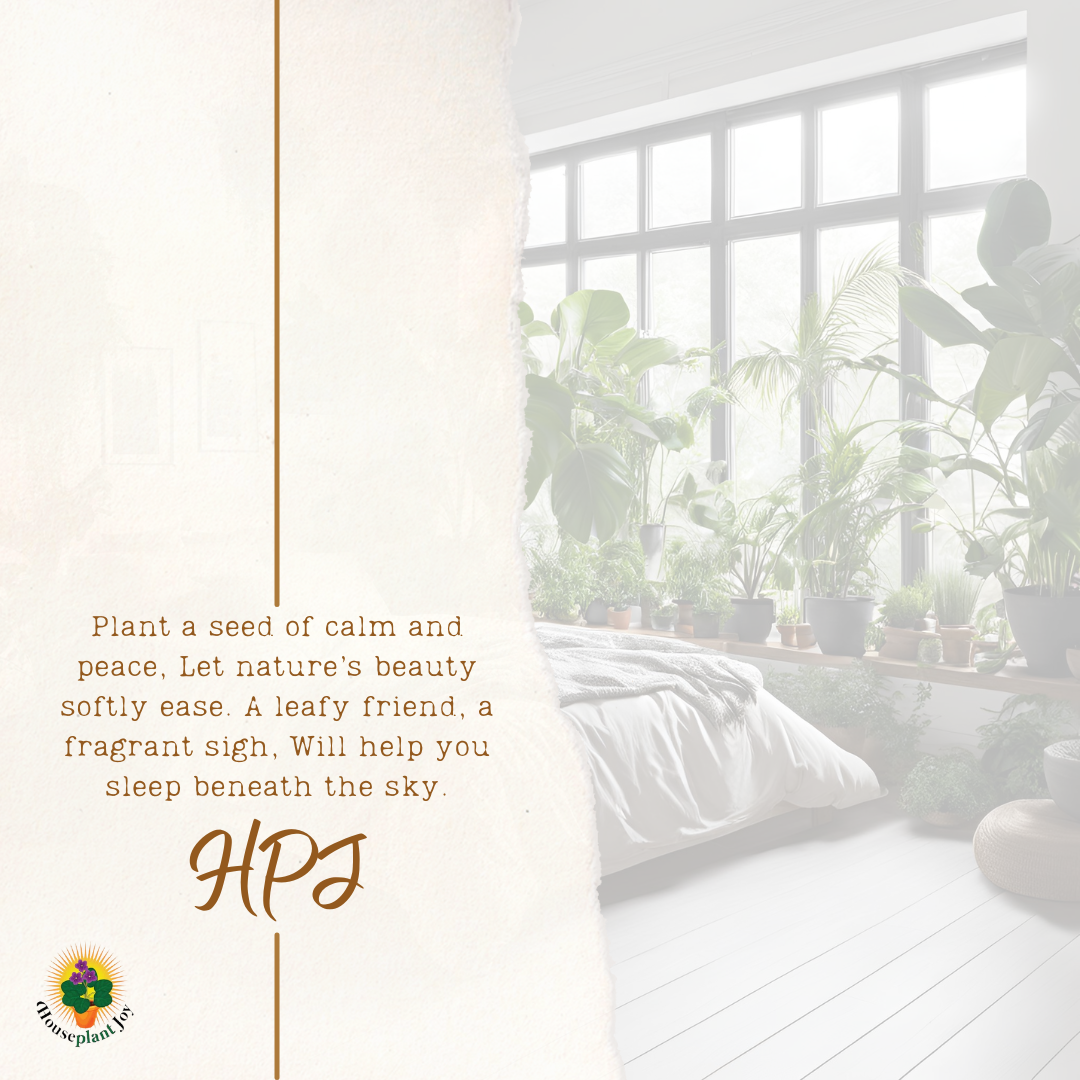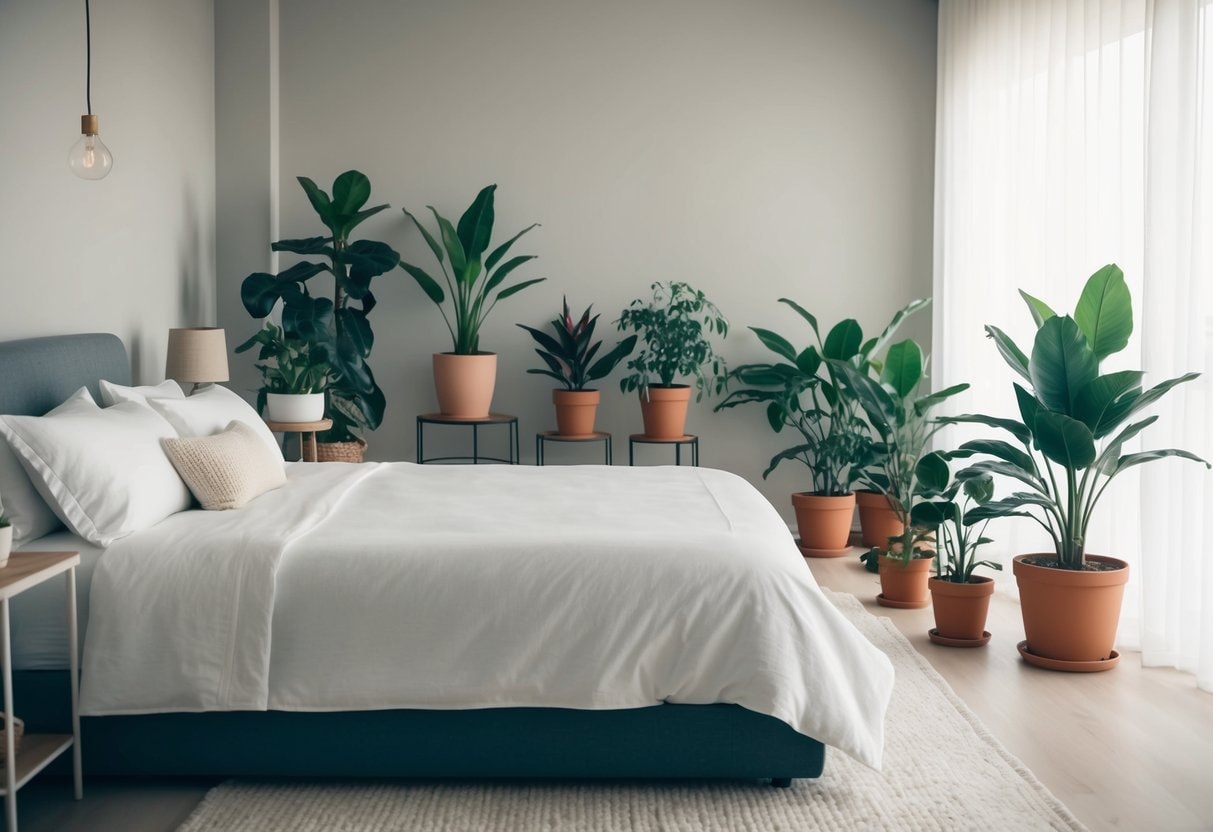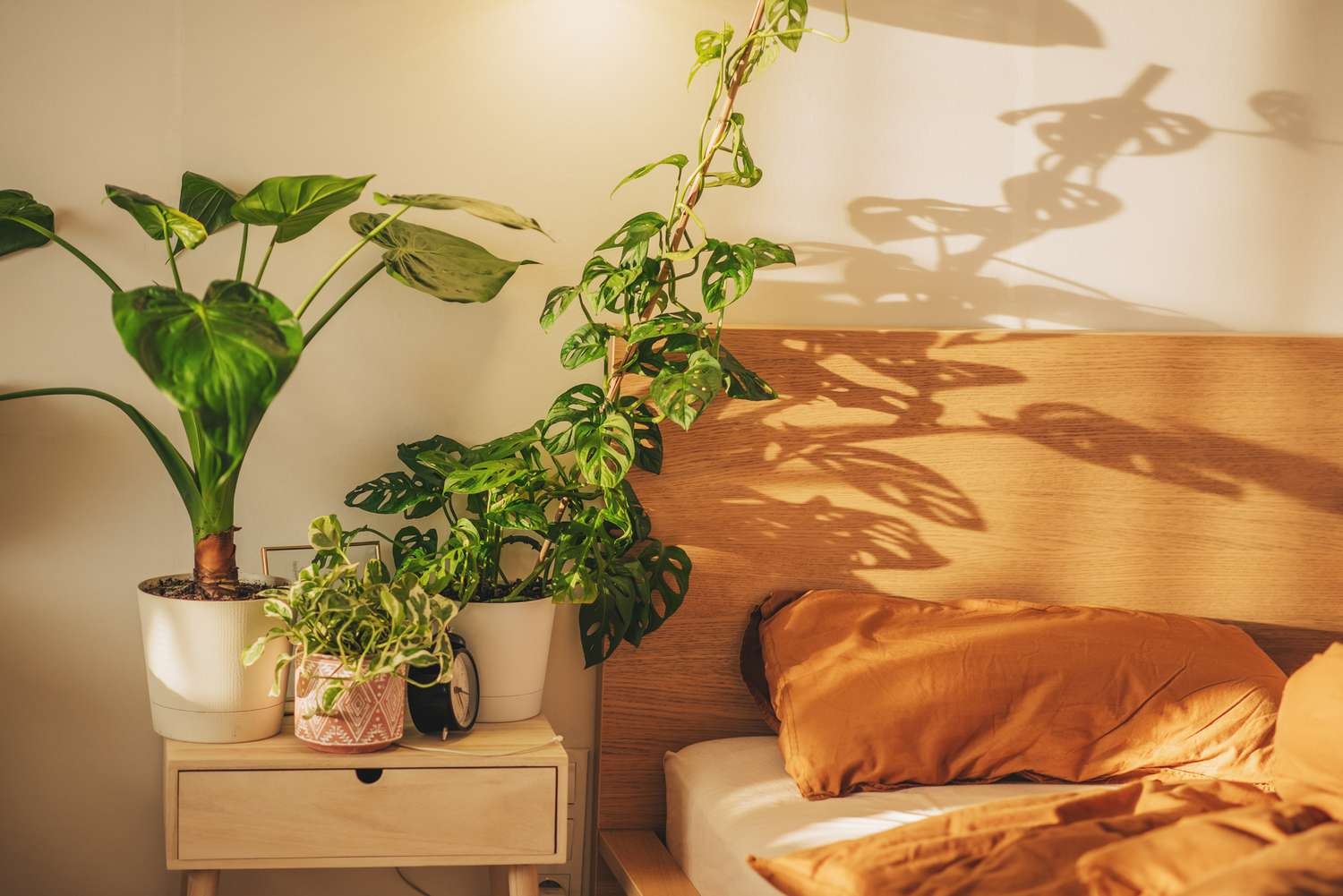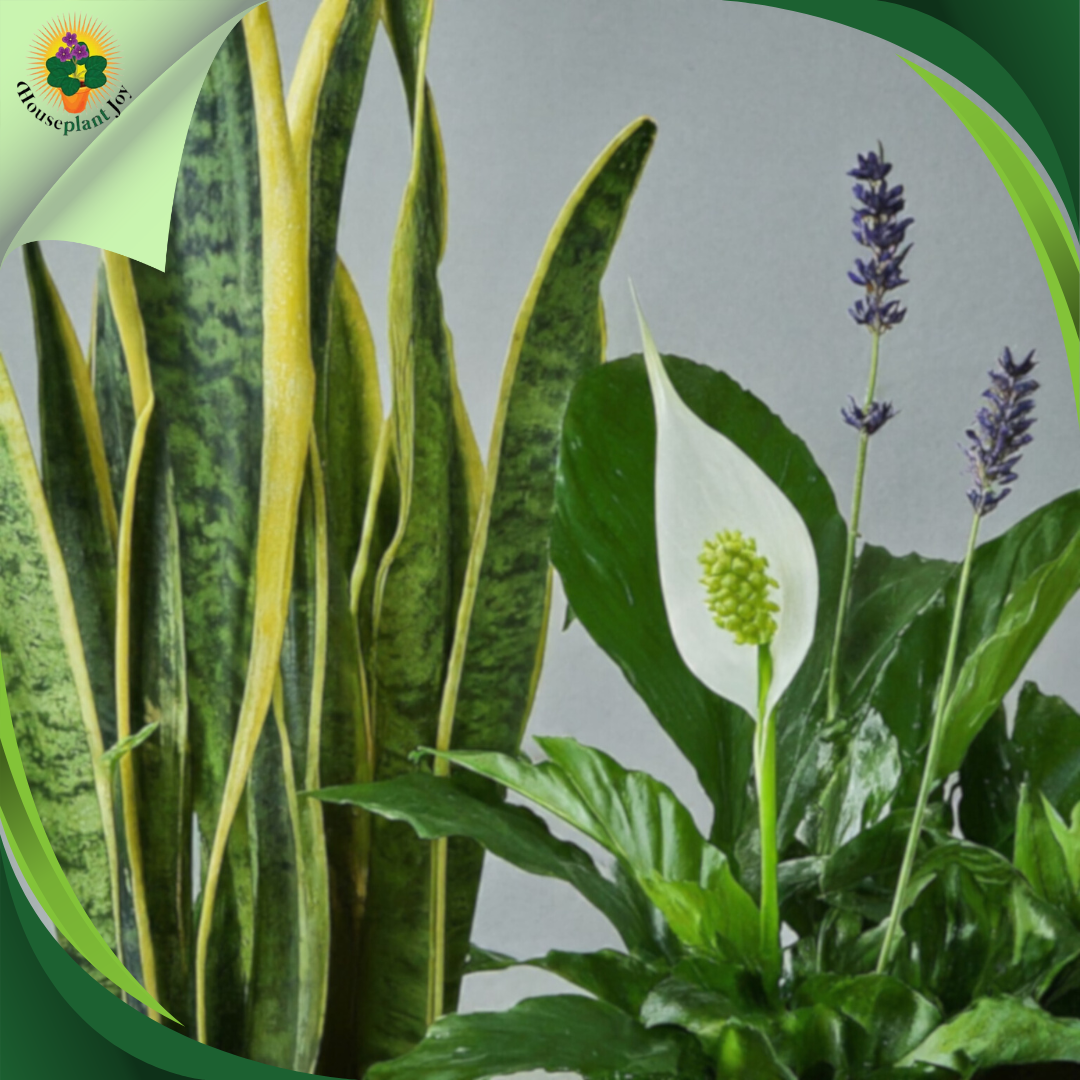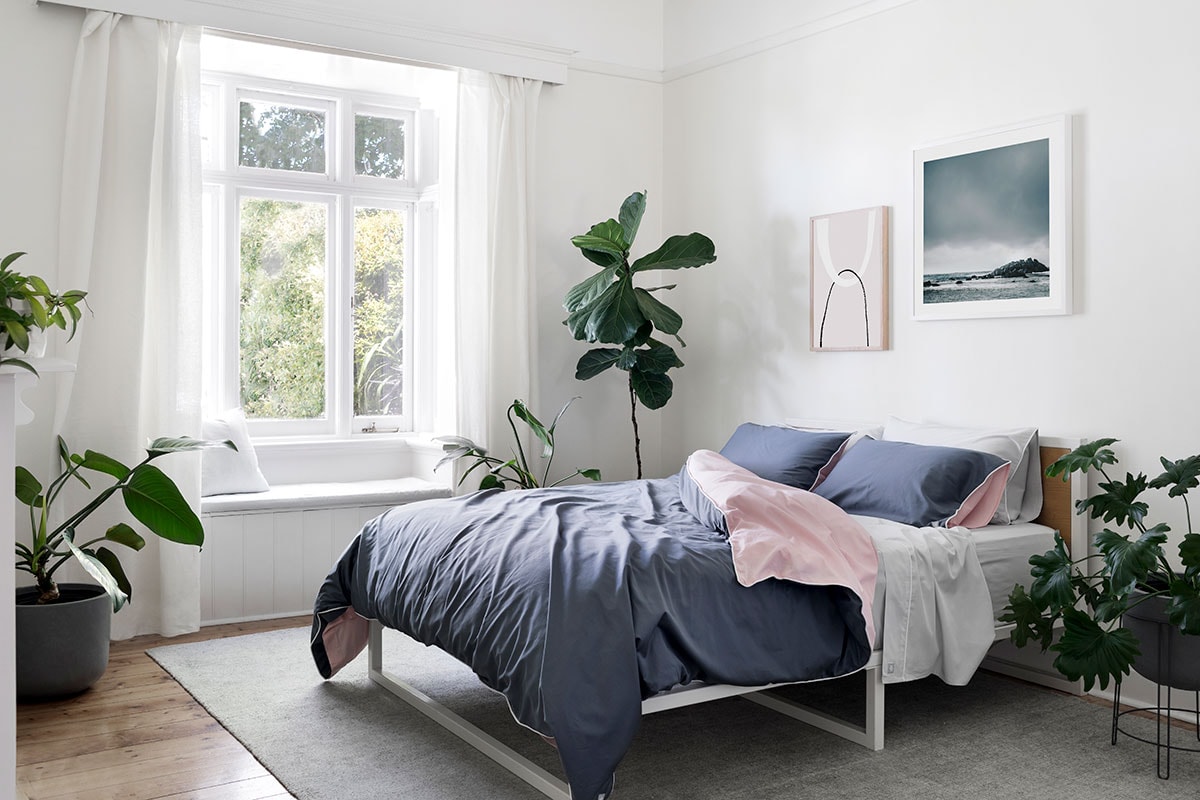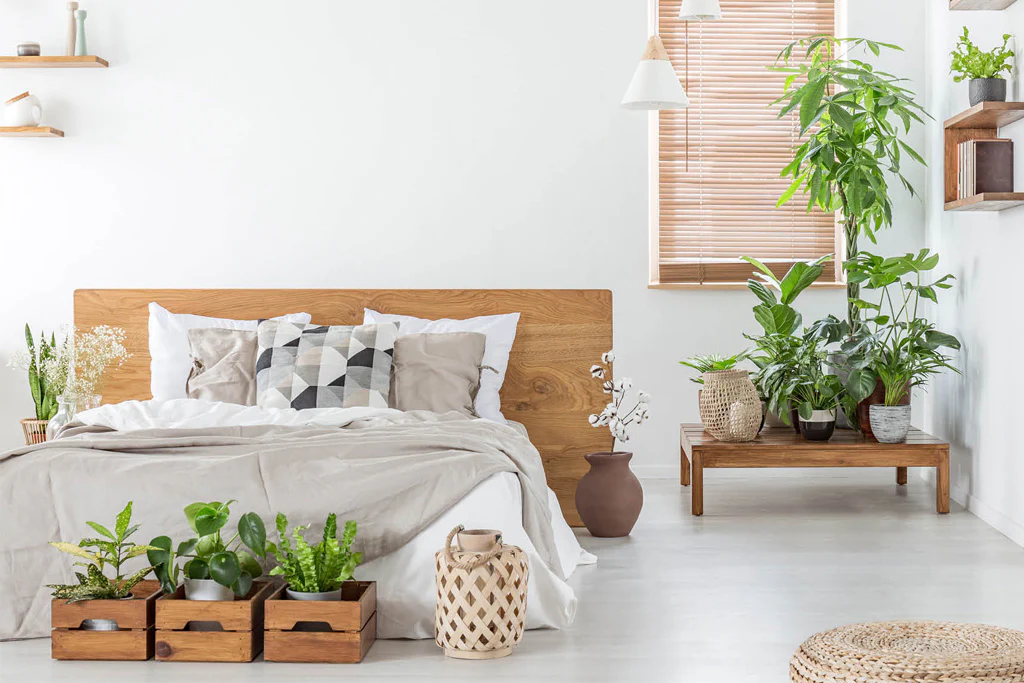HousePlantJoy is supported by our audience. When you purchase through one of our links, we may earn a small affiliate commission. As an Amazon Associate I earn from qualifying purchases. Your cost is not affected.
==================
Choosing the right plants for a restful bedroom goes beyond picking soothing colors and cozy furnishings—it’s about creating an environment that promotes relaxation and rejuvenation. Incorporating plants into your sleep space can significantly enhance your relaxation and overall well-being. Plants not only improve the aesthetics of your bedroom but also contribute to a tranquil atmosphere that supports better sleep and overall wellness.
This article will explore how selecting the best plants can transform your bedroom into a serene retreat. From improving air quality to adding natural beauty, discover how these green companions can foster a calming environment that encourages restful nights and refreshing mornings. Learn how plant choices can elevate your bedroom experience and support a peaceful slumber.
Sleep Soundly: Choosing the Right Plants for a Restful Bedroom – Your Green Guide to Better Sleep
Are you having trouble sleeping? You’re not alone. Many people struggle to get a good night’s rest. But did you know that adding some greenery to your bedroom could help? Plants can improve air quality, reduce stress, and create a calming atmosphere that promotes better sleep. I’ve found that choosing the right plants for my bedroom has made a big difference in my sleep quality.
Some plants are better suited for the bedroom than others. Lavender, for example, is known for its soothing scent that can help you relax before bed. Plants are not just about looks; placing plants in your bedroom isn’t just about looks. It’s about creating a peaceful space that helps you unwind and drift off to sleep more easily. You can turn your bedroom into a cozy sleep haven with the right plants.
Key Takeaways
- Plants like snake plants and peace lilies improve air quality by releasing oxygen and removing toxins, leading to better sleep and a healthier environment.
- Aromatic plants such as lavender and jasmine help reduce stress and anxiety with calming fragrances, promoting a more restful sleep.
- Positioning plants strategically, like on bedside tables or high shelves, balances aesthetics and functionality, enhancing the calming atmosphere of your bedroom.
- Choose hardy plants like aloe vera and ZZ plants for low light conditions and minimal upkeep, making maintaining a serene sleep space easier.
Understanding How Plants Affect Sleep
Plants do more than look pretty. They can help us sleep better in a few ways. Some plants give off nice smells that help us relax. Lavender is known for its calming scent that can help us fall asleep faster. Other plants clean the air while we sleep. The snake plant is great for this.
It takes in carbon dioxide and gives out oxygen at night. This is the opposite of what most plants do. Some plants, like aloe vera, can improve the air quality in our rooms. Better air means we breathe easier, which leads to more restful sleep.
The Role of Air Quality in Sleep Hygiene
Clean air is key for good sleep. Plants can help a lot with this. They act like natural air filters, removing harmful stuff from our air. Plants like the peace lily can remove toxins from the air. This means we breathe cleaner air while we sleep. Cleaner air can lead to better breathing and more restful sleep. Some plants, like the spider, are good at cleaning the air.
They can remove things like formaldehyde, which can be found in some furniture. By putting these plants in our bedrooms, we can create a healthier space for sleep. This can help us wake up feeling refreshed and ready for the day.
Top Plants for a Restful Sleep
Lavender is my top pick for better sleep. Its calming scent can lower stress and heart rate. I like to keep a small pot on my nightstand. Aloe vera is another good choice. It releases oxygen at night, improving air quality in your room. I find this helps me breathe easier while I sleep.
Peace lilies are great, too. They clean the air and add humidity, making it comfy for sleeping. I put one in the corner of my bedroom. Jasmine and gardenia are other options I like. Their sweet smell can help you relax and fall asleep faster.
Considering Plant Care and Space Requirements
When picking sleep-friendly plants, I think about how much space I have. Some plants need more room than others. I also look at how much care each plant needs.
- Aloe vera is easy – it doesn’t need much water. Lavender likes lots of sun, so I put it near a window.
- Peace lilies are good if you forget to water them sometimes. They droop when thirsty, reminding you it’s time to water.
For small spaces, start with one or two small plants. You can always add more later if you like having them around. Remember to check if plants are safe for pets if you have any. Some common plants can be harmful if eaten.
Creating a Calming Visual Environment
I love using plants to make bedrooms feel cozy and calm. Placing a large, leafy plant like a peace lily in a corner can create a focal point. It draws the eye and adds a touch of nature. For the bedside table, I pick smaller plants. A cute succulent or a small pothos works great.
They only take up a little space but still add greenery. I also like hanging plants from the ceiling or placing them on high shelves. This adds visual interest at different levels. It makes the room feel more layered and interesting.
Balancing Aesthetics and Functionality
When I add plants to a bedroom, I think about how they look and what they do. Some plants, like snake plants, are great for cleaning the air. I put these near the bed to help with better sleep. I make sure plants don’t block important areas. They shouldn’t get in the way of doors, windows, or walkways.
I also keep them away from electronics to avoid accidents. For a neat look, I group plants with similar needs. This makes watering easier and looks more organized. I use pretty pots that match the room’s style to tie everything together.
Routine Care Tips for Your Bedroom Plants
I always start by checking the soil moisture. Most bedroom plants need watering when the top inch of soil feels dry. I use my finger to test this. Dusting leaves is important, too. I gently wipe them with a damp cloth to keep them clean and healthy. Proper lighting is crucial.
When choosing the right plants for a restful bedroom, it’sensuring they receive the appropriate amount of light is crucial. Adjusting their position closer to or further from windows as needed helps them thrive. Fertilizing is another essential task in maintaining a peaceful bedroom environment. I feed my plants a balanced, water-soluble fertilizer during growing seasons every month. Additionally, trimming any yellow or dead leaves keeps my plants looking their best and enhances the overall ambiance of the space.
Dealing with Potential Plant Problems
Sometimes, despite my best efforts, problems can arise. If I notice yellowing leaves, I check for overwatering or underwatering first. Pests can be a nuisance. I inspect my plants regularly for signs of bugs. If I spot any, I use insecticidal soap or neem oil to remove them.
Brown leaf tips often mean low humidity. I mist my plants or use a pebble tray to increase moisture in the air. If a plant outgrows its pot, I repot it in spring. I choose a slightly larger container with good drainage. For plants that seem unhappy, I reassess their care. Sometimes, a simple change in watering or light can make a big difference.
Soothing Scents: Aromatic Plants for Relaxation
Some plants can fill our bedrooms with calming scents that help us relax and sleep better, making them essential for choosing the right plants for a restful bedroom. I’ve found that certain fragrances can improve how well I rest at night, highlighting the importance of selecting plants that enhance the overall ambiance and tranquility of your sleep space.
Best Fragrant Plants for the Bedroom
I love having Jasmine in my bedroom. Its sweet scent helps me feel calm before bed. Jasmine plants can enhance the overall ambiance of a sleeping space. Lavender is another great choice. Its purple flowers look pretty, and the smell helps me unwind. I keep a small pot on my nightstand.
For a fresh, citrusy scent, I recommend lemongrass. It reduces anxiety and promotes relaxation. I brew the leaves into a soothing tea before bed. English ivy is also nice for bedrooms. It purifies the air and has a subtle, earthy smell that I find comforting.
How Scent Impacts Sleep Patterns
Our sense of smell is closely linked to sleep. I’ve noticed that certain aromas help my body and mind unwind, making it easier to drift off. When I breathe in calming scents, my brain releases chemicals that help me relax. This can slow down my heart rate and lower my blood pressure. Consistent exposure to soothing fragrances can improve my sleep habits over time.
My body starts to associate those smells with rest. It’s important to choose scents you find relaxing. What works for me might not work for everyone. I suggest trying different plants to see which ones help you sleep best.
Integrating Plants into Your Sleep Routine
Adding plants to your nightly routine can significantly enhance relaxation and improve sleep quality, making them an essential part of choosing the right plants for a restful bedroom. Integrating these natural elements into your sleep space creates a calming environment that supports better rest. A consistent plant care schedule further ensures you maintain these benefits long-term, making your bedroom a serene sanctuary for peaceful slumbers.
Introducing Plants into Your Nightly Ritual
I like to start by placing sleep-friendly plants near my bed. Lavender and chamomile are great choices. Their scents help me unwind. I gently brush the leaves of my lavender plant before bed. This releases calming aromas.
For chamomile, I brew a cup of tea using fresh flowers from my plant. Sometimes, I mist my aloe vera plant. The sound of water droplets is soothing. I also enjoy gazing at my plants for a few minutes. It helps clear my mind before sleep.
Crafting a Long-term Plant Care Schedule
I water most of my bedroom plants once a week. I mark it on my calendar so I remember. Some plants, like aloe vera, need less water. I check the soil before watering. Every month, I dust the leaves of my plants. This keeps them healthy and looking nice. I also rotate the pots so all sides get sunlight.
Twice a year, I repot my plants if needed. Spring and fall work well for this. I use this time to check for any pest issues, too. By sticking to this schedule, I keep my sleep-enhancing plants thriving. It’s become a relaxing part of my routine.
Embrace Serenity: Transform Your Sleep Space with the Right Plants
Incorporating the right plants into your bedroom can be a transformative step towards achieving a more restful and rejuvenating sleep experience. Choosing the right plants for a restful bedroom can enhance your sleep space’s aesthetic appeal and functionality. Plants like lavender and aloe vera add natural beauty and provide a calming environment that supports better sleep quality and overall wellness.
With this guide’s insights, you now have the tools to select and care for plants that will help you create a serene retreat. Whether it’s the soothing scent of jasmine or the air-purifying benefits of a peace lily, the right plants can significantly impact your nightly rest. Embrace these green companions to craft a peaceful bedroom sanctuary and enjoy the many benefits of a well-chosen plant collection.
What Are the Top Plants Recommended for Improving Oxygen Levels in the Bedroom?
Can Certain Plants in the Bedroom Help Promote Better Sleep Quality?
Which Plants Are Known to Be Lucky or Auspicious for Bedrooms?
Are There Any Downsides to Keeping Plants in the Bedroom Environment?
What Low-maintenance Plants Are Suitable for Low-Light Bedrooms?
Transform Your Space with Stunning Houseplants!
Ready to elevate your plant game and enhance your gardening skills? Whether you’re looking to refresh your indoor sanctuary or seeking fresh inspiration, our vibrant community and expert tips are here to ignite your green-thumb journey. Dive in and elevate your plant passion to new heights!
Join us now and be part of our community!
Why become a part of our community? We’re more than just a group—we’re a vibrant network of plant enthusiasts eager to support and inspire one another. By joining us, you’ll:
- Access Expert Guidance.
- Discover New Ideas.
- Connect with Like-minded Plant Lovers.
- Learn and Grow Together.
- Enjoy Exclusive Content.
Join us today! Follow Houseplant Joy on Facebook, Instagram, and Twitter for daily inspiration and a blooming good time!



